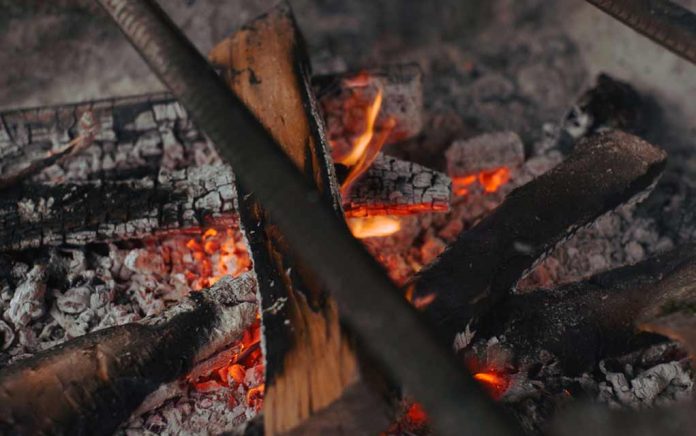(SurvivalDaily.com) – One of the major keys to survival is to use everything on hand in creative ways. The more use you can get out of any item, the more valuable it is. Burning wood is going to be a significant factor for survival in a number of emergency scenarios. It will keep you warm, cook your food and help keep nocturnal predators away.
But what can you do with the leftover ash? Is this byproduct of wood-burning good for anything? The answer is yes. In fact, there are a surprising number of ways it can be used in a pinch.
Warnings:
- Do not use ash from wood treated with chemicals for any of the following tips. This includes wood that has been painted and pressure-treated boards for example.
- Make sure the ash has cooled before attempting to use it. If stored, embers can retain heat for days or even weeks when buried in piles of ash.
For Cleaning
One of the most notable uses for wood ash is the creation of soap. In a post-collapse world, personal hygiene products will quickly become difficult to obtain to say the least. Having the ability to make your own will not only keep you smelling nice, but they can help you stay free of illness.
The simplest form of this is useful while camping — simply mix some white ash into your pan after cooking meat. The ash will mix into the animal fat and create a crude soap which can be used to scrub the pan clean.
To create a more complex soap, boil the ashes for roughly an hour then allow the mixture to cool. Once the water has cooled, lye from the ash will collect on the surface of the water which can be skimmed off. Once you have a decent amount of the lye (be careful with this, it is harmful to the skin and eyes), you can then boil animal fat, vegetable oil or lard down and mix the lye in. Note that any solid scraps from the animal fat should be filtered out of the liquid prior to adding the lye.
Boil the mixture of liquid fat and lye from the ash until it reaches an oatmeal-like consistency. Pour this mixture into a mold and cool it to finish the bars of soap.
For the Survival Garden
Wood ash isn’t just a way to make soap, it is also useful in the garden too. Pesky critters such as snails and slugs enjoy devouring produce nearly as much as we do. By spreading ash around the perimeter of your garden, or around the plants individually, you can keep these insects from feasting on your veggies. The ash will dry out these slimy beasts, so they will avoid it to find more easily accessible sources of food.
Another helpful boon to the garden comes by mixing ash into your compost pile. This will fortify the mixture with a shot of potassium, however, ash does contain alkaline so don’t overdo it.
Ash is beneficial to many plants that feed off of calcium as well. Common garden standouts such as carrots, cauliflower, broccoli, beans, lettuce, and even garlic respond well to a small amount of ash spread around their base. Be careful though, some plants (potatoes for example) are harmed by adding ash to them.
Other Uses
Other common uses for wood ash and charcoal include filtering water, deterring pests, and repelling odors. A bucket of ash can be a welcome addition to an outhouse or makeshift waste pit — sprinkling the ash over the refuse will hide the smell. Not only will this save you from dealing with the stench, but it will also help mask it from potential predators as well.
In any survival situation, being able to utilize the resources around you could be the difference between walking away alive or facing a bleak future. If you can learn to use the byproduct of a life-saving tool such as a fire, all the better. The more you learn and train for the worst now, the more likely you will be to get gritty and push your way through a true emergency.
~Copyright 2021, SurvivalDaily.com

















